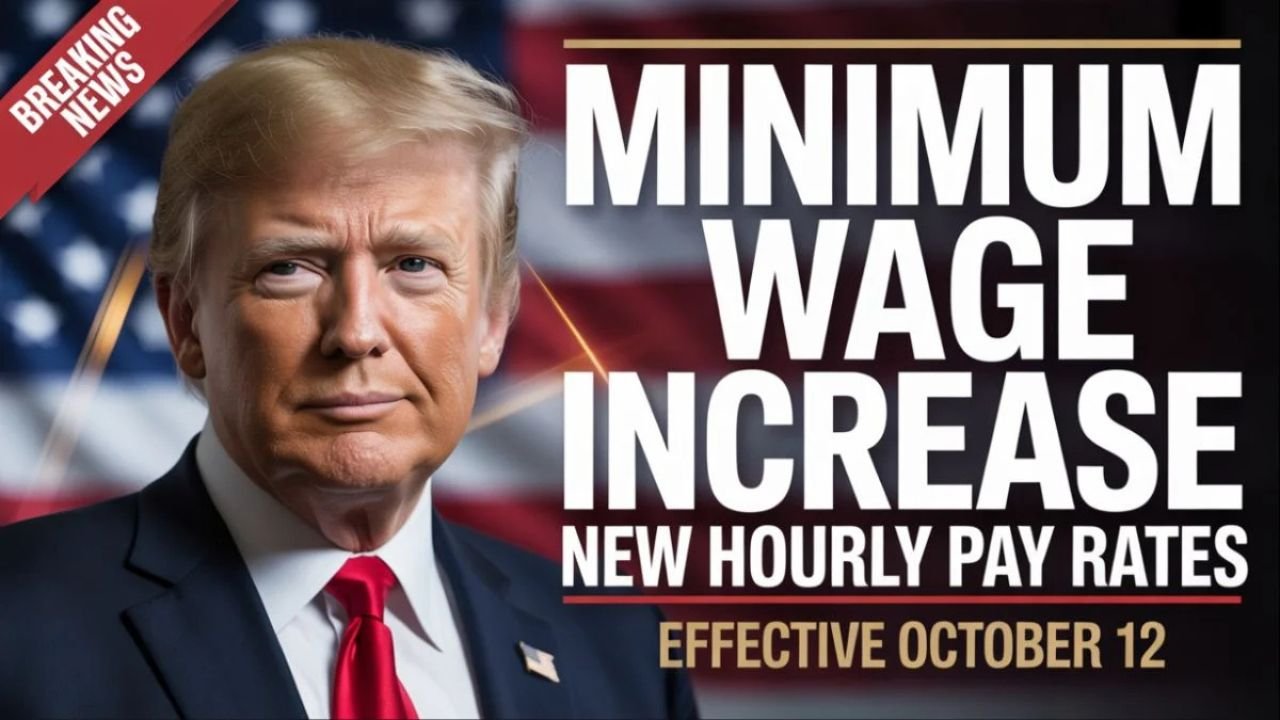U.S. Minimum Wage Increase 2025: Starting October 12, 2025, the United States will see a nationwide increase in the federal minimum wage, giving millions of American workers a boost in their hourly pay. The new rate, set at $12.50 per hour, marks an important step in addressing inflation and improving living standards across the country.
Why the Wage Is Increasing
The wage adjustment comes in response to growing pressure from workers, unions, and lawmakers who have argued that the existing rate no longer keeps up with rising living costs. Housing, food, healthcare, and transportation expenses have increased steadily over the past few years, leaving many low-wage earners struggling to make ends meet.
By raising the minimum wage, the government aims to ensure that workers receive fairer compensation for their labor and are better able to support themselves and their families.
Who Will Benefit
The increase primarily impacts hourly employees covered under the Fair Labor Standards Act (FLSA), which includes private-sector workers, federal contract employees, and certain service industry positions.
Workers in states where the minimum wage is lower than $12.50 will see the biggest gains. However, states and cities with higher local minimum wages will continue to pay the higher amount — meaning workers there will not experience a federal rate change.
What Employers Need to Do
Employers must ensure that all eligible workers are paid at least the new minimum rate beginning October 12, 2025. Payroll systems, time-tracking software, and employment contracts should be updated accordingly. Businesses that fail to comply could face penalties or back-pay requirements.
For small businesses, this increase may require budget adjustments, but many economists believe higher wages can improve productivity, reduce turnover, and strengthen consumer spending.
How Much the Increase Means For Workers
A $0.50 per hour increase might seem small, but for full-time employees working 40 hours per week, it adds up to an extra $1,040 annually before taxes. This additional income can help workers manage everyday expenses and build a bit more financial stability.
Economic Impact and Future Outlook
The minimum wage hike is expected to have a positive impact on local economies as workers spend more in their communities. While some business owners express concern about higher labor costs, economists suggest that moderate increases like this generally stimulate growth rather than harm employment.
Looking ahead, further adjustments could follow in the coming years. Many policymakers are pushing for automatic annual increases tied to inflation to prevent future wage stagnation.
Conclusion
The 2025 minimum wage increase marks an important milestone for American workers. While it may not completely solve the cost-of-living challenges, it represents a meaningful effort to ensure that every hour of work earns a fairer return. As of October 12, 2025, millions of employees across the nation will see that change reflected directly in their paychecks.




